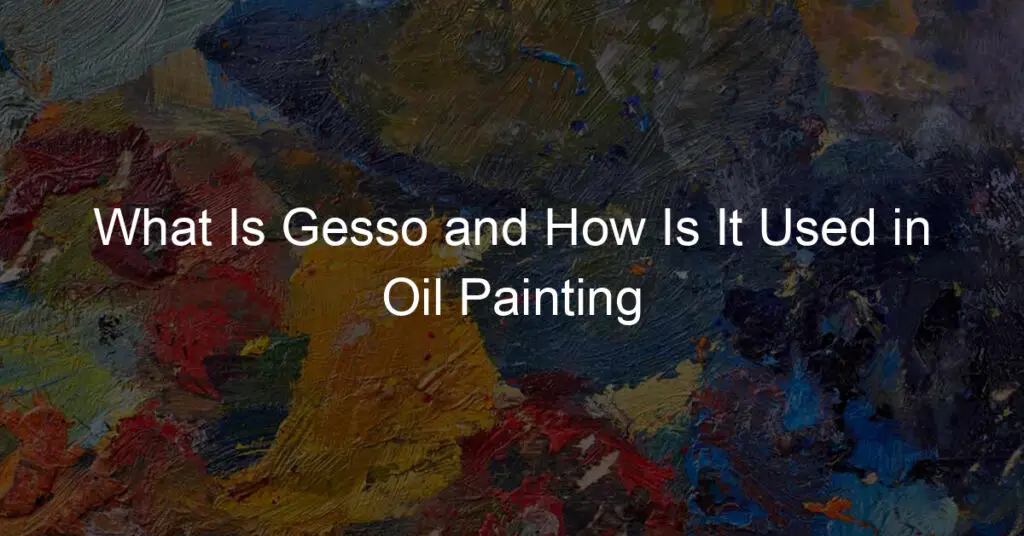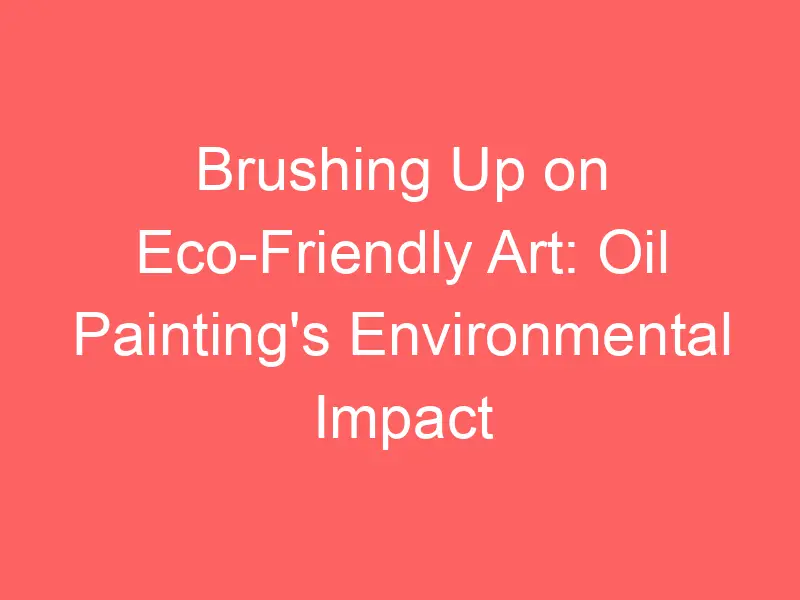From ancient Egypt to contemporary art studios, one constant remains in the world of fine art: the use of gesso. This primer, traditionally a mixture of a glue binder, chalk, and white pigment, or in its modern form, a blend of calcium carbonate with an acrylic polymer medium, is the unsung hero behind most paintings.
Its role is fundamental, preparing the canvas or other surfaces for the application of oil paints, while also offering protective properties to ensure the longevity of artworks. This guide delves deep into the world of gesso, discussing its history, its composition, how it’s applied, and its pivotal role in oil painting.
We’ll also explore common mistakes to avoid when using gesso, how to troubleshoot issues, and even its environmental impact. Whether you’re a beginner artist or a seasoned professional, understanding gesso and how to use it effectively is crucial in creating artwork that stands the test of time.
Understanding the Basics: What is Gesso?
Gesso is a white paint mixture traditionally made of a binder mixed with chalk or gypsum, used in artwork preparation to prime surfaces like canvas, wood or paper. The word “gesso” stems from the Italian language, meaning “chalk.”
In modern times, gesso also comes in acrylic form, consisting of a mixture of chalk and white pigment with an acrylic polymer medium. This versatile substance prepares the canvas or other surfaces by providing a slightly textured and absorbent ground, ensuring the oil paint adheres effectively and the substrate is shielded from the potentially damaging effects of oil paints.
The Composition and Making of Gesso
Traditional gesso is composed of a mixture of a glue binder, usually rabbit-skin glue, chalk, and white pigment. The glue provides adhesion, while the chalk or gypsum offers body and whiteness to the mix.
Acrylic gesso, on the other hand, is a combination of calcium carbonate with an acrylic polymer medium, along with other chemicals to ensure flexibility and longevity. This mixture is much more accessible and easier to use, thus has become the standard choice for many artists today.
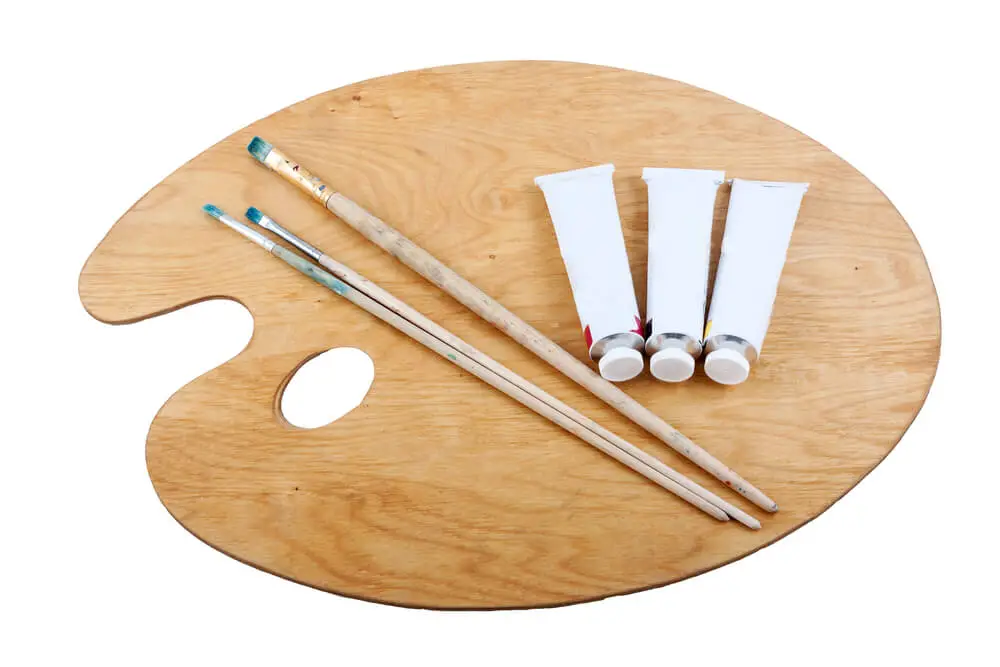
History of Gesso in Art
Gesso has been used since the era of the ancient Egyptians, who implemented it to prepare their painting surfaces. It became crucial during the Renaissance period in Italy when artists began painting on wood panels.
These panels were coated with multiple layers of gesso to make them smooth and ready for the application of gold leaf or tempera paints. As the popularity of canvas painting grew, gesso transitioned into the role of a necessary ground layer, helping to protect canvases from the corrosive nature of oil paints.
Different Types of Gesso: Acrylic vs. Traditional
While traditional gesso is made of a glue binder, chalk, and white pigment, acrylic gesso is composed of an acrylic polymer medium and calcium carbonate. Acrylic gesso is less brittle and more flexible than its traditional counterpart, making it suitable for canvas work.
It’s also easier to apply, dries quickly, and is water-resistant. Meanwhile, traditional gesso is preferred for rigid substrates and art restoration due to its more delicate, smooth, and absorbent finish.
The Importance of Gesso in Oil Painting
Gesso plays a crucial role in oil painting as it ensures proper paint adhesion and maintains the vibrancy of colors. Applying gesso to the painting surface helps the oil paints to stick better, preventing them from soaking into the canvas fibers.
Gesso also prevents the oil in paints from seeping into and rotting the canvas over time, thus enhancing the longevity of the artwork. Its white color brightens oil paint colors, ensuring the final painting is vivid and striking.

Role of Gesso as a Primer for Oil Paints
As a primer, gesso provides a barrier between the canvas or substrate and the oil paints applied. Without a layer of gesso, oil paints would penetrate the fibers of the canvas, causing eventual decay or discoloration. By priming with gesso, artists ensure a uniform and slightly textured surface that will hold the paint well. Additionally, gesso’s bright white color enhances the color luminosity of the oil paints, helping the colors to stand out more.
How to Apply Gesso: Step-by-Step Guide
Applying gesso to your canvas is a fairly straightforward process. Start by shaking or stirring your gesso before use to ensure a smooth consistency. Using a wide, flat brush, apply the gesso across the surface of the canvas in even, long strokes.
It’s often best to start in the middle and work your way out. Allow this layer to dry thoroughly before applying a second coat perpendicular to the direction of the first. Some artists choose to sand the dried gesso between coats to achieve a smoother surface, but this isn’t always necessary. Let the final layer dry before you begin painting.
Key Factors to Consider When Applying Gesso
There are several factors to consider when applying gesso. The number of coats you apply can affect the texture of your canvas—more coats generally result in a smoother surface. The direction of your brush strokes also matters; alternating the direction between layers can help you achieve a more uniform texture.
Additionally, the thickness of your gesso and the type of brush you use can both affect the final appearance of your primed canvas. Lastly, it’s important to allow each layer of gesso to dry completely before applying the next to prevent cracking or peeling.

Gesso Drying Time: What to Expect
Gesso typically takes between 20 minutes to 1 hour to dry, depending on the thickness of the application and the environmental conditions. It’s crucial to let gesso dry completely between each coat to ensure a stable base for your painting.
Applying paint or another layer of gesso too soon can result in a surface that’s prone to cracking and other damage. You can speed up the drying time by using a hairdryer or fan, but a natural drying process is always the best way to ensure even, complete drying.
Texture and Gesso: Adding Dimension to Your Artwork
Gesso is not just a tool for priming the canvas—it can also be used creatively to add texture and depth to your work. By using a palette knife or a textured brush to apply gesso, you can create raised, textured surfaces that add a three-dimensional effect to your painting.
Artists can create peaks, lines, scratches, and other textured elements that, when painted over, can create interesting visual effects and add depth to your artwork.
White Gesso vs. Colored Gesso: What’s the Difference?
While white gesso is the most commonly used due to its ability to brighten other colors, colored gesso can also be used as a way to set a tonal ground for your painting. Colored gesso, available in various hues, is ideal when you want to start your painting with a colored rather than a white background.
This can impact the overall mood of the piece and reduce the number of paint layers you might need to achieve your desired background color. Both white and colored gesso serve the same purpose in terms of preparing and protecting your canvas.
Mixing Paint with Gesso: Pros and Cons
Mixing paint with gesso can serve a few different purposes. For one, it can be a way to create your own colored gesso, which can set a unique tonal base for your artwork. Secondly, it can be a method of saving paint if you plan on covering a large area with a particular color.
However, there are also drawbacks. Mixing paint with gesso can alter its consistency, potentially impacting its role as a protective layer. Additionally, it might dilute the color of the paint, requiring more layers for the desired opacity.
Common Mistakes to Avoid When Using Gesso
There are several common mistakes artists make when using gesso. These include not allowing each layer to dry thoroughly before applying the next one, which can cause the gesso to
As mentioned, applying a new layer of gesso before the previous one has dried can lead to issues like cracking, bubbling, or peeling. Another common mistake is applying gesso too thickly, which can also result in cracks as the gesso dries. Gesso should be applied in thin, even coats.
Over-sanding is another pitfall—while it’s fine to sand between layers of gesso to achieve a smooth surface, excessive sanding can make the surface too smooth and slick, which isn’t ideal for oil paint adhesion.
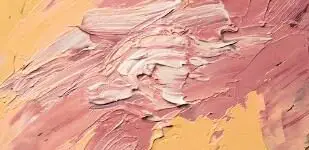
Troubleshooting Gesso Issues: Cracking, Peeling, and More
If you encounter issues such as cracking or peeling with your gesso, there are usually simple fixes. Cracking often occurs when the gesso is applied too thickly or the layer underneath hasn’t dried properly. To resolve this, apply thinner layers and ensure each layer dries fully before the next application.
If your gesso is peeling, it might be due to oil or dirt on the canvas. Always ensure your canvas is clean before you begin. If problems persist, it may be necessary to remove the gesso and start again, or consult with an art supply expert to ensure your materials are compatible.
The Longevity of Oil Paintings with Gesso
Gesso plays a significant role in the longevity of oil paintings. It acts as a barrier, preventing the oils in the paint from damaging the canvas over time. It also helps the paint adhere better to the canvas, reducing the chance of the paint flaking or chipping off.
When properly applied, a gesso-primed canvas can help oil paintings last for many decades, or even centuries. The old master paintings we see in museums today have endured in part because of the protective properties of gesso.
The Environmental Impact of Gesso: Is It Eco-Friendly?
The environmental impact of gesso varies based on its composition. Traditional gesso, made with natural ingredients like rabbit-skin glue and chalk, has a smaller environmental footprint compared to acrylic gesso.
However, sourcing these ingredients can involve animal products and therefore isn’t vegan or cruelty-free. Acrylic gesso, on the other hand, is synthetic and its production involves chemical processes that can be harmful to the environment.
It’s not biodegradable and can contribute to plastic pollution. For environmentally-conscious artists, there are eco-friendly gesso alternatives available, like casein-based or earth-friendly acrylic primers.
Gesso Alternatives for Oil Painting: Canvases, Boards, and More
While the gesso is a popular choice for priming canvases for oil painting, there are alternatives available. Oil primed canvases or boards are one such option, providing a smoother and more slippery surface than gesso.
Oil grounds are also less absorbent, which can alter the look and feel of the finished painting. Some artists use acrylic mediums or matte mediums as a ground for oil paint, while others may prefer traditional materials like rabbit-skin glue and chalk. It’s essential to research and experiment to find the best ground for your specific style and technique.
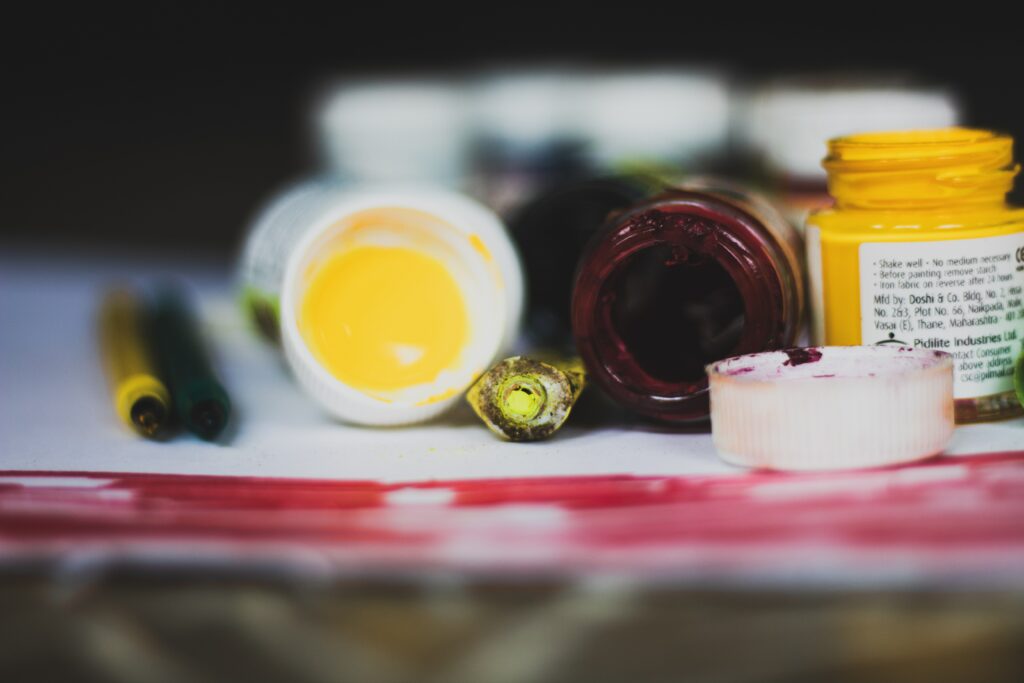
The Impact of Gesso on the Art World and Art Preservation
Gesso has had a profound impact on the art world and the preservation of artwork. By providing a protective barrier between canvas and oil paints, gesso has allowed works of art to stand the test of time.
It has also expanded the possibilities of what artists can paint on, opening up options like wood panels, paper, and more. Additionally, gesso has played a role in shaping the aesthetic of paintings. Its white base can enhance the brightness and luminosity of oil paints, while its texture can add a unique character to
As mentioned, the gesso’s textural influence can significantly impact the final appearance of the artwork. Without gesso, oil paintings would not have the same vibrancy and longevity that we see in many of the masterpieces today. From its role in ancient Egyptian art to its essential function in modern day painting, gesso has been instrumental in the creation and preservation of artistic works throughout history.
Exploring Creative Techniques with Gesso in Oil Painting
Beyond its traditional use as a primer, gesso can also be used creatively to bring texture and depth to oil paintings. By applying gesso with various tools like palette knives, textured brushes, or even sponges, artists can create unique effects and surface structures that add dimensionality to their work.
It’s also possible to mix gesso with other mediums, like sand or sawdust, to create an even more textured ground. Some artists even use tinted or colored gesso to establish a tonal ground for their paintings. The possibilities with gesso are limited only by the artist’s imagination and willingness to experiment.
Conclusion: The Power and Importance of Gesso in Oil Painting
In the journey through the world of oil painting, gesso emerges as an indispensable companion. Its foundational role in preparing the canvas ensures not only the vibrancy of the colors but also the preservation of the artwork for future generations.
We’ve explored its history, its composition, and the key factors to consider when applying it. We’ve seen that it’s much more than a simple primer; it can also be a creative tool that adds texture and depth to our work. Furthermore, we’ve considered its environmental impact and alternatives that might suit different artists’ preferences and styles.
Regardless of your artistic style or choice of medium, understanding the significance and proper use of gesso can truly enhance the quality and longevity of your work. By paying close attention to this often overlooked step in the process, you can bring a new level of professionalism and refinement to your oil paintings.

